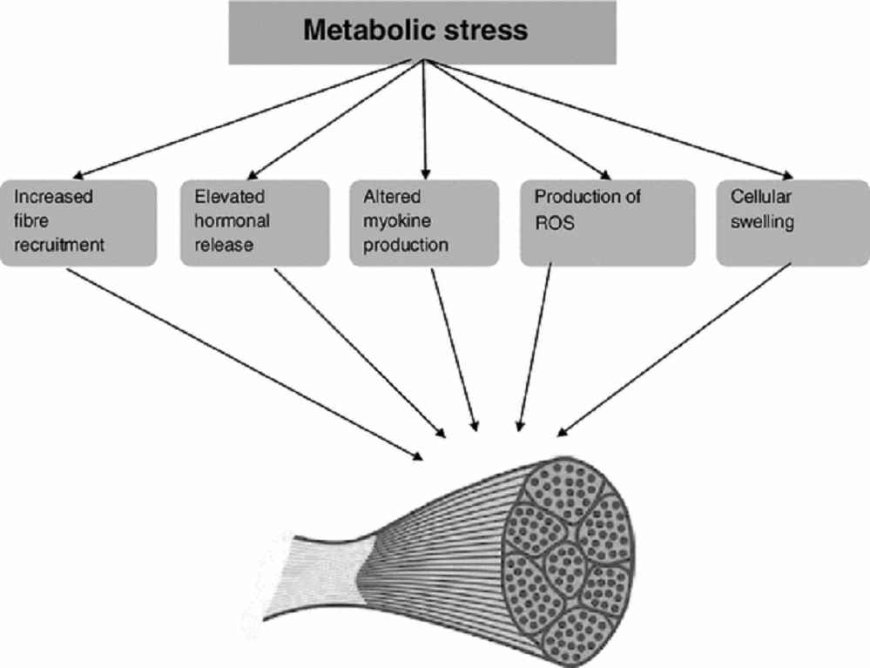Metabolic stress: definition, causes and consequences
What is metabolic stress and why does it occur? How can we provoke him? And how does it relate to exercise and muscle gain? Let us

What is metabolic stress and why does it occur? How can we provoke him? And how does it relate to exercise and muscle gain? Let us clear these doubts to you!
Does the concept of metabolic stress sound familiar to you? Do you associate it with exercise? Metabolic stress is the definition of an organic process and, at the same time, a factor that allows the growth of muscle mass (i.e. an increase in muscle size). So this is the process that leads to muscle hypertrophy.
Muscle hypertrophy is the growth of a muscle, that is, an increase in its size, the number of myofibrils (made of actin and myosin fibers) that make up the muscle, or both. But what else is metabolic stress related to?
Why does it appear and what are its consequences? Is it enough to increase muscle mass? Can we use other processes?
Metabolic stress and muscle hypertrophy
As we saw in the introduction, metabolic stress is an organic process that facilitates muscle hypertrophy. It can be said that muscle hypertrophy is what bodybuilders or those who work to increase muscle mass are striving for. In summary, we could achieve this effect through:
- Muscle damage
- Metabolic stress
- Mechanical stress.
Mechanical stress causes muscle damage and an inflammatory reaction, which in turn provokes an increase in the release of muscle growth factors. This is how the muscle grows larger.
On the other hand, according to research, the maximum increase in muscle mass is achieved thanks to metabolic stress, without neglecting mechanical stress.
How does metabolic stress arise?
Metabolic stress occurs when we increase the load on a muscle or a specific group of muscles. This results in a gradual stimulation of muscle growth.
At the chemical level ...
This means that we put a strain on the muscle and generate a process called anaerobic glycolysis, which produces adenosine triphosphate (ATP). ATP is the source of energy you need for training. It is this process that allows us to obtain the energy necessary to carry out muscle contractions from glucose molecules, in a state of oxygen deficiency or lack.
Must Read: Samsung history: from the food industry to electronics
Why are all these processes happening? Because the rate at which we need this energy is greater than the rate at which glucose is released with oxygen. Therefore, this process essentially takes place under anaerobic conditions.
Accumulation of metabolites
In particular, the metabolic stress that accompanies exercise occurs as a consequence of a build-up of metabolites. Metabolites are compounds formed by the breakdown of nutrients.
Their function is to provide the body with the energy it needs, especially during resistance training. All of this then triggers a muscle hypertrophy reaction.
The major metabolite accumulated by metabolic stress is lactate. It is a glucose metabolite produced by body tissues under conditions of insufficient oxygen supply. Other metabolites that we find in this process include: phosphate, hydrogen and glucose metabolite (anaerobic glycolysis).
The importance of repetition and metabolic stress
One of the repetitive practices of athletes during training, especially bodybuilders, is to perform a specific number of repetitions, in addition to increasing the intensity of training. But what happens when we train at very intense levels? Well, the demand for oxygen exceeds the supply.
In fact, it is believed that the lack of oxygen in some muscle cells, also known as hypoxia, is a key factor. This explains why certain breaks, intervals, or repetition of exercises during training lead to greater growth or muscle hypertrophy.
Therefore, performing repetitions during exercise, as well as shortening the breaks (to a few minutes) can be effective if we want the accumulation of metabolites to be much greater. Hence, the anabolic response is also increased and the hypertrophy achieved in this way will also be greater.
Final thoughts
As we have seen, when it comes to gaining muscle mass or achieving muscle hypertrophy, not only metabolic stress is utilized, but other processes as well. These include: exerting muscle tension and causing muscle damage intense enough to stimulate muscle growth.
Metabolic stress is an organic process that would partly explain why muscle size increases. In this article, we could learn a little more about how this process works. However, if you want to train in the healthiest and most effective way, it's best to go to a specialist in this field.
